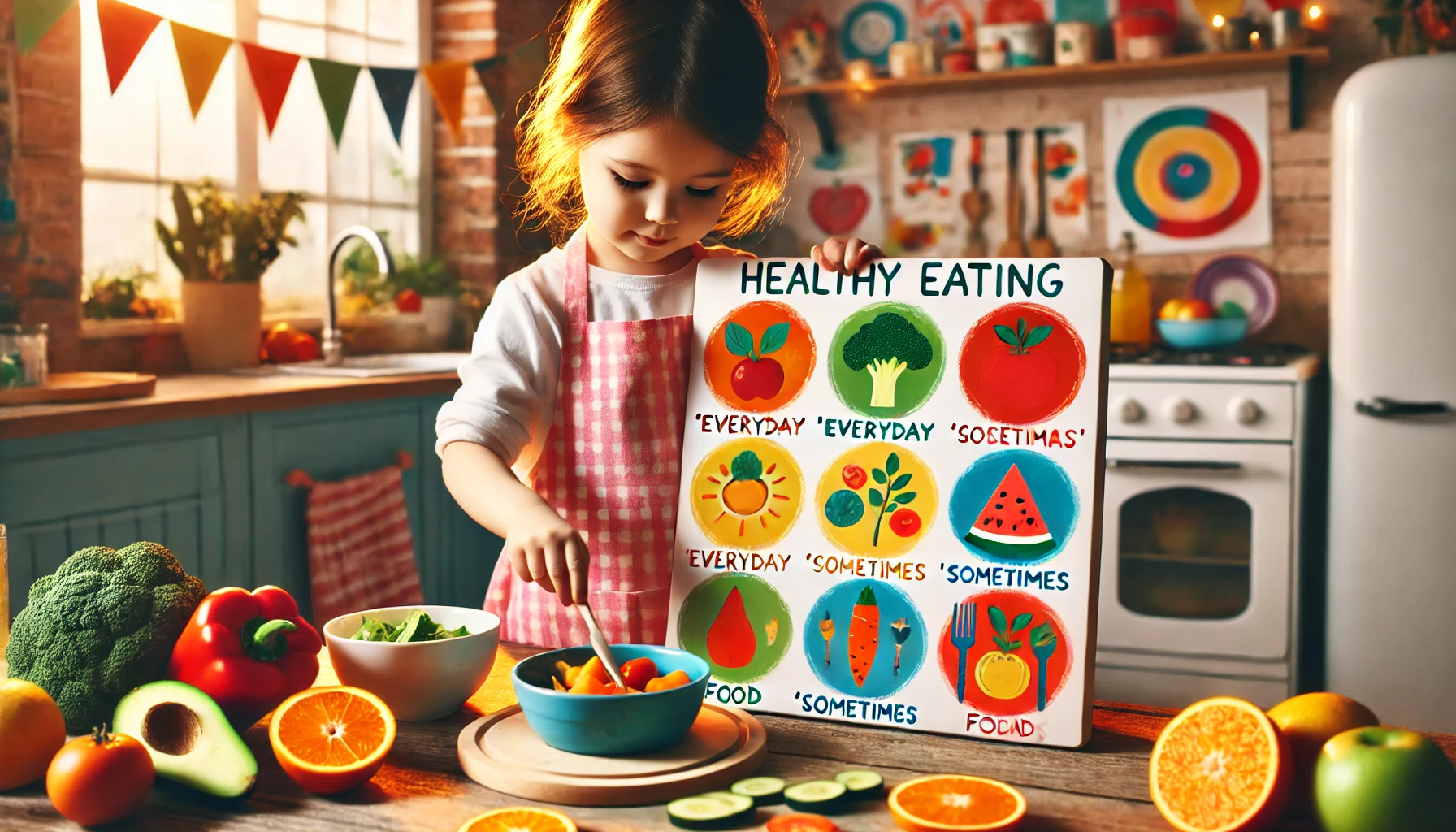How to Teach Young Children About Healthy Eating and Nutrition
Helping young children develop healthy eating habits early in life sets the foundation for physical growth, energy, learning, and long-term wellness. While young kids might not understand complex nutritional science, they can learn to recognize which foods help them feel strong, focused, and happy. By making food education fun, hands-on, and consistent, parents can teach children to make smart choices and enjoy a variety of nutritious foods.
Why Nutrition Education Matters in Early Childhood
- Supports growth and brain development
- Promotes focus and learning
- Encourages a balanced diet from an early age
- Reduces picky eating over time
- Prepares children for a lifetime of healthy habits
1. Introduce the Food Groups in a Fun Way
Kids are more likely to remember information when it’s colorful and engaging.
Activity Idea:
- Use visual aids like the MyPlate model to explain food categories: fruits, vegetables, grains, proteins, and dairy.
- Play a matching game with plastic food toys or magazine cutouts.
- Make a “rainbow plate” challenge—can they eat five different-colored foods in one day?
What Kids Learn:
- That different foods have different jobs (e.g., help you grow, give you energy).
- The importance of balance and variety.
- That healthy eating can be playful and creative.
2. Get Kids Involved in Meal Prep
When kids help prepare food, they’re more excited to try it.
Activity Idea:
- Let children wash vegetables, stir ingredients, or spread peanut butter on toast.
- Assign a “helper of the day” role for meal prep.
- Use cookie cutters to make fun shapes from fruits or sandwiches.
What Kids Learn:
- Where food comes from and how it’s made.
- That they have ownership and choice in healthy eating.
- Pride in contributing to family meals.
3. Use Books and Stories to Teach About Healthy Eating
Storytelling helps children connect with lessons emotionally and intellectually.
Activity Idea:
- Read books like The Very Hungry Caterpillar or Good Enough to Eat.
- Ask: “What healthy foods did the caterpillar eat? What happened when he ate too much junk?”
- Encourage kids to create their own food storybook.
What Kids Learn:
- How to make good food choices.
- That food affects how we feel and function.
- Literacy and emotional skills alongside nutrition knowledge.
4. Talk About What Food Does for the Body
Make the connection between food and physical performance.
Activity Idea:
- Say: “Carrots help you see,” “Eggs help your brain think,” “Bananas give you energy to run.”
- Create a food/body chart with drawings or stickers.
- Talk about food before meals: “This helps your muscles grow!”
What Kids Learn:
- That food is fuel for fun and learning.
- A sense of purpose behind eating well.
- The benefits of healthy choices beyond taste.
5. Encourage Mindful Eating
Teaching kids to listen to their bodies promotes better self-regulation.
Activity Idea:
- Encourage slow eating by pausing halfway through the meal and asking: “Is your tummy still hungry?”
- Turn off screens during meals to focus on the food.
- Ask kids to describe the taste, smell, and texture of their food.
What Kids Learn:
- How to recognize hunger and fullness cues.
- Awareness of food’s impact on how they feel.
- The importance of eating with intention.
6. Balance Treats Without Shame
Kids can enjoy sweets as part of a balanced diet—but they need guidance.
Activity Idea:
- Teach the concept of “sometimes” vs. “everyday” foods.
- Don’t use sweets as a reward; instead, treat them neutrally.
- Pair treats with healthy habits: “Let’s have a cookie after our veggie snack.”
What Kids Learn:
- That no food is “bad,” but balance is key.
- How to avoid food guilt or obsession.
- Healthy attitudes toward eating.
7. Visit a Farmer’s Market or Garden
Learning about where food comes from makes it more meaningful.
Activity Idea:
- Take your child to a local farmer’s market and let them pick out a fruit or vegetable to try.
- Start a small garden together—even if it’s just herbs in a pot.
- Talk about how food grows and travels to your plate.
What Kids Learn:
- The origin of healthy food.
- Respect for farmers and the environment.
- The excitement of trying new things.
8. Celebrate Healthy Choices
Positive reinforcement encourages repetition of good habits.
Activity Idea:
- Use a healthy eating chart where kids can add stickers when they try a new food.
- Give verbal praise: “You chose a colorful plate—great job!”
- Let kids plan one healthy meal each week.
What Kids Learn:
- That making smart choices feels good.
- How to take pride in caring for their body.
- Independence and confidence in food decisions.
Final Thoughts
Teaching young children about healthy eating and nutrition doesn’t require strict rules or complicated science. It’s about building awareness, confidence, and joy around food. With interactive activities, family participation, and a positive environment, children can learn to nourish themselves well—both now and for the future.
